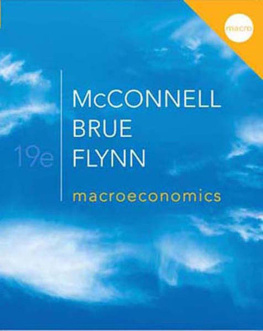Demystified Series
Advanced Statistics Demystified
Algebra Demystified
Anatomy Demystified
Astronomy Demystified
Biology Demystified
Business Statistics Demystified
C++ Demystified
Calculus Demystified
Chemistry Demystified
College Algebra Demystified
Databases Demystified
Data Structures Demystified
Differential Equations Demystified
Digital Electronics Demystified
Earth Science Demystified
Electricity Demystified
Electronics Demystified
Environmental Science Demystified
Everyday Math Demystified
Geometry Demystified
Home Networking Demystified
Investing Demystified
Java Demystified
JavaScript Demystified
Macroeconomics Demystified
Math Proofs Demystified
Math Word Problems Demystified
Microbiology Demystified
OOP Demystified
Options Demystified
Personal Computing Demystified
Physics Demystified
Physiology Demystified
Pre-Algebra Demystified
Precalculus Demystified
Probability Demystified
Project Management Demystified
Quantum Mechanics Demystified
Relativity Demystified
Robotics Demystified
Six Sigma Demystified
Statistics Demystified
Trigonometry Demystified


Copyright 2005 by August Swanenberg. All rights reserved. Printed in the United States of America. Except as permitted under the United States Copyright Act of 1976, no part of this publication may be reproduced or distributed in any form or by any means, or stored in a data base or retrieval system, without the prior written permission of the publisher.
ISBN: 978-0-07-149048-1
MHID: 0-07-149048-5
The material in this eBook also appears in the print version of this title: ISBN: 978-0-07-145511-4, MHID: 0-07-145511-6.
All trademarks are trademarks of their respective owners. Rather than put a trademark symbol after every occurrence of a trademarked name, we use names in an editorial fashion only, and to the benefit of the trademark owner, with no intention of infringement of the trademark. Where such designations appear in this book, they have been printed with initial caps.
McGraw-Hill eBooks are available at special quantity discounts to use as premiums and sales promotions, or for use in corporate training programs. To contact a representative please e-mail us at bulksales@mcgraw-hill.com.
Information contained in this work has been obtained by The McGraw-Hill Companies, Inc. (McGraw-Hill) from sources believed to be reliable. However, neither McGraw-Hill nor its authors guarantee the accuracy or completeness of any information published herein and neither McGraw-Hill nor its authors shall be responsible for any errors, omissions, or damages arising out of use of this information. This work is published with the understanding that McGraw-Hill and its authors are supplying information but are not attempting to render engineering or other professional services. If such services are required, the assistance of an appropriate professional should be sought.
TERMS OF USE
This is a copyrighted work and The McGraw-Hill Companies, Inc. (McGraw-Hill) and its licensors reserve all rights in and to the work. Use of this work is subject to these terms. Except as permitted under the Copyright Act of 1976 and the right to store and retrieve one copy of the work, you may not decompile, disassemble, reverse engineer, reproduce, modify, create derivative works based upon, transmit, distribute, disseminate, sell, publish or sublicense the work or any part of it without McGraw-Hills prior consent. You may use the work for your own noncommercial and personal use; any other use of the work is strictly prohibited. Your right to use the work may be terminated if you fail to comply with these terms.
THE WORK IS PROVIDED AS IS. McGRAW-HILL AND ITS LICENSORS MAKE NO GUARANTEES OR WARRANTIES AS TO THE ACCURACY, ADEQUACY OR COMPLETENESS OF OR RESULTS TO BE OBTAINED FROM USING THE WORK, INCLUDING ANY INFORMATION THAT CAN BE ACCESSED THROUGH THE WORK VIA HYPERLINK OR OTHERWISE, AND EXPRESSLY DISCLAIM ANY WARRANTY, EXPRESS OR IMPLIED, INCLUDING BUT NOT LIMITED TO IMPLIED WARRANTIES OF MERCHANTABILITY OR FITNESS FOR A PARTICULAR PURPOSE. McGraw-Hill and its licensors do not warrant or guarantee that the functions contained in the work will meet your requirements or that its operation will be uninterrupted or error free. Neither McGraw-Hill nor its licensors shall be liable to you or anyone else for any inaccuracy, error or omission, regardless of cause, in the work or for any damages resulting therefrom. McGraw-Hill has no responsibility for the content of any information accessed through the work. Under no circumstances shall McGraw-Hill and/or its licensors be liable for any indirect, incidental, special, punitive, consequential or similar damages that result from the use of or inability to use the work, even if any of them has been advised of the possibility of such damages. This limitation of liability shall apply to any claim or cause whatsoever whether such claim or cause arises in contract, tort or otherwise.
To all those who have questions about our global economy.
CONTENTS
Preface
Macroeconomics touches our lives in many ways: through the income we earn in the labor market, the interest rate on our mortgage, the rates on our credit cards, and the fluctuations in the stock market, to name just a few.
In addition, the media surround us with daily headlines such as jobless recovery, declining dollar, and widening trade deficit, as well as with commentary about federal fiscal and monetary policies and their impact on topics such as inflation, unemployment, Social Security, and health care.
Historically, the impact of macroeconomics has also been profound.
For example, the discussions about central banking in George Washingtons first administration accelerated the development of our national political parties. Thomas Jefferson and the Democratic-Republicans, who argued that the central bank violated states rights and was therefore unconstitutional, vehemently opposed federal banking, strongly advocated by Alexander Hamilton and the Federalist party.
Another example is the Great Depression (19291939), a traumatic experience for the United States and the western world, which led to the active policy involvement of the federal government in the pursuit of low inflation, full employment, and robust economic growth.
Yet despite its importance, there remains something mysterious about economics. Why? I believe there are two important reasons:
Economics language. Just listen to the economics experts who use foreign words (cost-push inflationary pressures?) mixed with comments such as this economy desperately needs confidence-boosting measures. Economics has a language of its own and, like any foreign language, we need to practice it to become fluent. Fortunately, the number of foreign words is limited and we can learn this language more quickly than, for example, French or Japanese.
Next page










